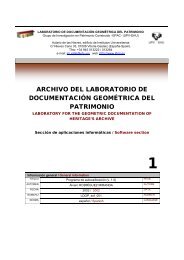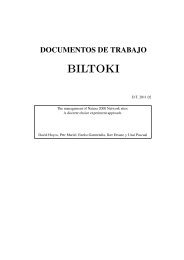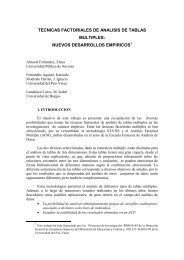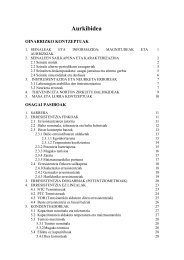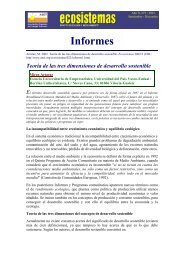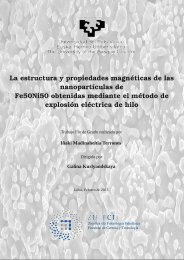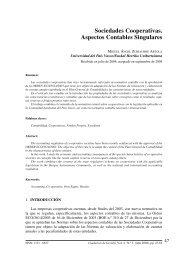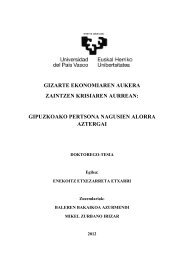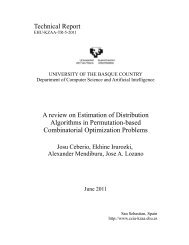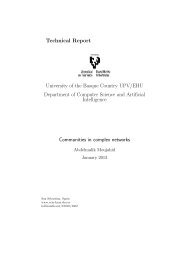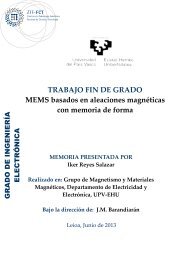Ï - ADDI
Ï - ADDI
Ï - ADDI
- No tags were found...
Create successful ePaper yourself
Turn your PDF publications into a flip-book with our unique Google optimized e-Paper software.
3.6. Conclusions 85carbon vacancy levels.(iv) For Co, Ni, the noble metals and Zn, the metal-carbon levels are progressively populated.This gives rise to a oscillatory behavior of the spin moment between 0 and 1 µ B . Thespin moments are more delocalized than those found for V, Cr and Mn and present a considerablecontribution from the carbon atoms around the impurity. The binding energy presents alocal maximum for Co, but suddenly drops for the noble metals and has its minimum for Zn.(v) The electronic structure, nearby E F , of substitutional impurities of Co, Ni, the noblemetals and Zn has a strong resemblance to that of the unreconstructed D 3h carbon monovacancy.We can draw an analogy between the electronic structure of these impurities and thatof the unreconstructed D 3h carbon monovacancy with different number of electrons (chargestates). The spin moment of these impurities can be fully understand exploiting this equivalence.In particular, the result that noble metals develop a spin moment of 1 µ B emergesnaturally within this picture.(vi) For the Co impurity, the equivalence can be pushed a step further and we can draw ananalogy with the electronic structure of a π-vacancy in a simple π-tight-binding description ofgraphene. This can be used to explain the peculiar behavior found for the magnetic couplingsbetween Co substitutionals in graphene. [115](vii) Fe impurities occupy a distinct position at the border between two different regimes.Their magnetic behavior stems from the competition between the carbon-metal hybridizationand the electron-electron interaction within the 3d shell. As a result, although Fe impuritiesare non-magnetic at the GGA level, GGA+U calculations with moderate values of U (above∼2 eV) produce a spin-moment of 1 µ B .(viii) We have found that the unexpected result that Au substitutionals [112,119] present aspin moment of 1µ B also holds for all noble metals, i.e., also Ag and Cu present a 1 µ B spinmoment.(ix) We have found that the ground state of the Zn substitutional is non-magnetic due toa Jahn-Teller distortion. Yet, it is possible to stabilize a symmetric configuration with a spinmoment of 2µ B with a very small energy penalty of ∼150 meV.Substitutional impurities of metals in graphene present some interesting magnetic and electronicproperties and, therefore, can provide an interesting route to add functionalities or totune the response of devices based on graphenic materials. Furthermore, recent experimentsby Rodriguez-Manzo and Banhart [83] have demonstrated the possibility to create individualvacancies at desired locations in carbon nanotubes using electron beams. This ability, incombination with the high stability of substitutional impurities, can open a route to fabricateordered arrays of these impurities at predefined locations. Such devices would allow, amongother applications, the experimental verification of the theoretical predictions of unusual magneticinteractions mediated by graphene. [84, 85, 115]



